Do you have a question about the Orion StarBlast 6 and is the answer not in the manual?
Attaching the red dot finder scope to the telescope base.
Securing the eyepiece rack to the telescope base.
Inserting an eyepiece into the focuser and securing it.
Rotating the focuser for comfortable viewing angles.
Adjusting the telescope tube for stable positioning.
Understanding the telescope's up/down and left/right movement.
Adjusting the focuser to achieve a sharp image.
Aligning and using the red dot finder for accurate aiming.
Using the red dot scope to aim the telescope at celestial objects.
Adjusting telescope position to follow moving objects.
Calculating telescope magnification based on optics.
Understanding the maximum useful magnification for the telescope.
Explaining the upside-down image in reflector telescopes.
Tips for positioning the telescope for comfortable use.
Selecting a location with minimal light pollution for best views.
Allowing the telescope to acclimate to ambient temperature.
Allowing eyes to adjust to darkness for better night vision.
Understanding atmospheric conditions affecting image quality.
How Earth's rotation affects object position and tracking.
What celestial objects can be observed with the telescope.
Tips for viewing lunar craters and phases.
How to safely view the Sun and observe sunspots.
Viewing planets like Jupiter, Saturn, and Venus.
Viewing stars, double stars, and their colors.
Observing nebulas, clusters, and galaxies.
Process of aligning primary and secondary mirrors for sharp images.
Final adjustment for centering the primary mirror reflection.
Using a star to check optical alignment and collimation.
Procedures for safely cleaning telescope optics.
Attaching the red dot finder scope to the telescope base.
Securing the eyepiece rack to the telescope base.
Inserting an eyepiece into the focuser and securing it.
Rotating the focuser for comfortable viewing angles.
Adjusting the telescope tube for stable positioning.
Understanding the telescope's up/down and left/right movement.
Adjusting the focuser to achieve a sharp image.
Aligning and using the red dot finder for accurate aiming.
Using the red dot scope to aim the telescope at celestial objects.
Adjusting telescope position to follow moving objects.
Calculating telescope magnification based on optics.
Understanding the maximum useful magnification for the telescope.
Explaining the upside-down image in reflector telescopes.
Tips for positioning the telescope for comfortable use.
Selecting a location with minimal light pollution for best views.
Allowing the telescope to acclimate to ambient temperature.
Allowing eyes to adjust to darkness for better night vision.
Understanding atmospheric conditions affecting image quality.
How Earth's rotation affects object position and tracking.
What celestial objects can be observed with the telescope.
Tips for viewing lunar craters and phases.
How to safely view the Sun and observe sunspots.
Viewing planets like Jupiter, Saturn, and Venus.
Viewing stars, double stars, and their colors.
Observing nebulas, clusters, and galaxies.
Process of aligning primary and secondary mirrors for sharp images.
Final adjustment for centering the primary mirror reflection.
Using a star to check optical alignment and collimation.
Procedures for safely cleaning telescope optics.
| Aperture | 150 mm |
|---|---|
| Focal Length | 750 mm |
| Focal Ratio | f/5 |
| Optical Design | Reflector |
| Magnification Range | 30x, 75x |
| Finder Scope | EZ Finder II |
| Weight | 23.5 lbs |
| Eyepieces Included | 25 mm, 10 mm |

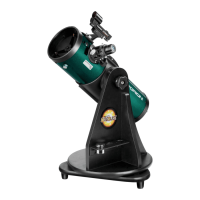
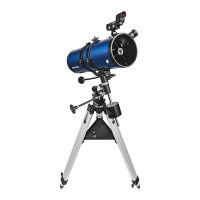
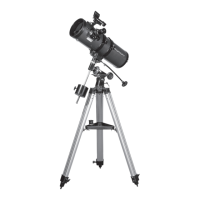
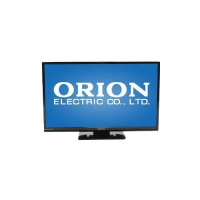
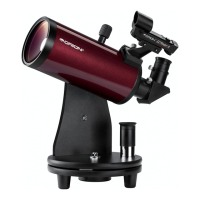



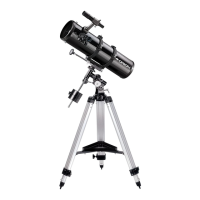
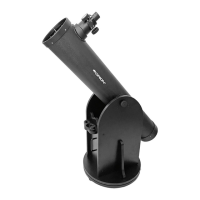
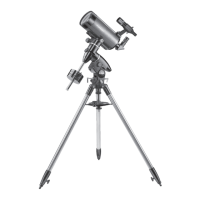
